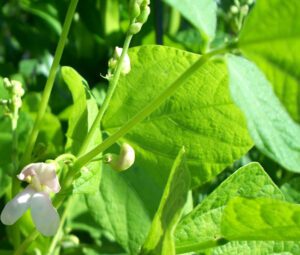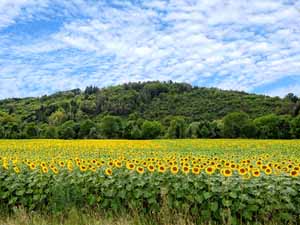Commercial cabbage farming is a very common and popular business in many countries around the world. Cabbage is a very popular vegetable and it is highly nutritious and found everywhere. Cabbage is actually a leafy green which is purple or pale green in coloration. It is an biennial plant and grown as an annual vegetable crop for it’s dense-leaved heads. It is closely related to broccoli, brussels sprouts and cauliflower.
Depending upon the variety, a cabbage can weights between 500 and 1000 grams. The green cabbage are most common which are smooth-leafed, firm-headed. Commercial cabbage farming is a very old business. It was most likely domesticated somewhere in Europe before 1000 BC (although, savoys were not developed until the 16th century AD).
Cabbage can be prepared in may different ways for eating. For example they can be steamed, pickled, stewed, roasted, fermented, sauteed, braised or even eaten raw. Raw cabbage is a rich source of vitamin C, K and dietary fiber. World production of cabbage and other brassicas was 71 million tonnes in 2020, led by China with 48% of the total.
However, commercial cabbage farming is a very popular and profitable business. You can start this business for making good profits.
Cabbage Nutrition And Health Benefits
Cabbage is very nutritious and good for human health. It is a good source of some essential vitamins and minerals. Raw cabbage is 1% protein, 6% carbohydrates, 92% water and contains negligible amount of fats. In a 100 grams reference amount, raw cabbage is a rich source of vitamin C and vitamin K, containing 44% and 72% respectively of the Daily Value. This vegetable is also a moderate source of vitamin B6 and folate, with no other nutrients found in significant content per 100 serving.
Health Benefits of Cabbage
Cabbage is a very good and healthy vegetable. Consuming it on a regular basis has numerous health benefits. Here we are trying to list the top health benefits of consuming cabbage.
- Cabbage is highly nutritious and it is rich in some essential vitamins, minerals and antioxidants.
- Cabbage contains very powerful antioxidants that may help to reduce inflammation.
- Vitamin C is very essential for our body and it has many important function in our body, and at the same time vitamin C is a potent antioxidant. Cabbage is a very good source of vitamin C.
- Cabbage is a great source of insoluble fiber, and this fiber keeps the digestive system healthy by providing fuel for friendly bacteria and promote regular bowel movements.
- Consuming cabbage may reduce the risk of heart disease, because it contains powerful pigments called anthocyanins.
- Cabbage is a rich source of potassium and potassium helps to keep blood pressure within a healthy range. So, high blood pressure patients can add cabbage to their diet.
- Cabbage is also a good source of soluble fiber and plant sterols. And all these substances have been shown to reduce LDL cholesterol.
- According to healthline ‘cabbage is a very good source of vitamin K1, with 85% of the RDI can be found in 89 grams of serving. Vitamin K is critical for blood clotting’.

Advantages of Cabbage Farming Business
Like many other commercial crops, cabbage farming has numerous benefits/advantages. Here we are tying to describe the top advantages of cabbage farming business.
- Commercial cabbage farming is not a new business idea, people are doing this business from the ancient time. It’s an established business in many countries around the world.
- As many people are doing this business throughout the world, so you don’t have to worry much about starting and operating this business.
- You will probably be able to learn from existing farmers in your area if you are a beginner.
- We recommend learning practically from existing farmers within your area. Learning practically before starting will help you to run your business smoothly.
- Actually, commercial production of cabbage is very easy and simple and the beginners can start this business with little practical knowledge.
- Commercial cabbage farming is profitable and you will be able to make good profits from this business.
- Initial investment requirement in commercial cabbage farming business is very less as compared to other crop production business.
- As this vegetable take relatively less time to grow, so you will get your invested money within a very short period of time.
- Demand of cabbage in the market is high, and the price is also high if you can start selling at the begging of the season.
- Cabbage is already very popular in the market. So, you don’t have to worry much about marketing your products.
- Growing cabbage from seeds is relatively easy and caring the plants is also very easy.
- As commercial cabbage farming is a profitable business, so it can be a great employment source for the people (especially for the educated but unemployed people).
- Cabbage is tasty, nutritious and very healthy. You can enjoy it in many different ways.
- You can enjoy fresh cabbage if you start your own cabbage production business.
How to Start Cabbage Farming?
As we have mentioned previously, starting commercial cabbage farming business is very easy and simple. Even the beginners can also start this business by having little practical knowledge. If you are a beginner, then we recommend having practical knowledge from an experienced farmer. Here we are trying to describe more information about starting and operating a successful cabbage farming business from planting, caring to harvesting and marketing.
Step 1. Complete A Cabbage Farming Training
If you are an absolute beginner, then you can consider completing a cabbage farming training. You can also learn practically about this business by visiting your local farms.
Step 2. Make A Business Plan
A good and effective business plan helps to start and manage a business perfectly. So, make an effective business plan before starting. Try to include everything in the business plan from starting to operating and marketing. You can ask for help from an expert if you are a beginner.
Step 3. Site Selection
Cabbage can be grown in a wide range of soil types. But the plants grow well when grown on well drained loamy soil having good moisture holding capacity. The cabbage plants can’t thrive well in highly acidic soils. They grow well in soil pH range between 5.5 and 6.5.
Step 4. Prepare the Soil
Preparing the soil perfectly is very important for successful cabbage farming business. Bring the soil to fine tilth by ploughing the land throughly. Give ploughing for 3-4 times then do levelling of soil. And add adequate organic fertilizers during the last ploughing. Add well decomposed cow dung and other organic fertilizers. Here are some tips for soil preparation for cabbage cultivation:
Step 5. Consider Climate Requirement
Cabbage generally grows well in a cool moist climate and is very hardy to frost. And it is generally grown during winter, but can also be grown throughout the year where temperature is cool.
Step 6. Best Time For Growing Cabbage
September to October is the ideal time for planting cabbage in the plain areas.
Step 7. Choose the Right Variety
Cabbage comes in many different varieties. Each variety has its own unique flavor and texture. Consider the flavor, texture, color and market price and demand of each variety when choosing a variety for your garden or commercial production. Some popular cabbage varieties are:
- Green cabbage
- Red cabbage
- Napa cabbage
- Savoy cabbage
- Bok choy
- Conehead cabbage
- Brussels sprouts
Step 8. Propagation of Cabbage
Cabbage propagation is mainly done from seeds.
Step 9. Purchase Seeds
Cabbage seeds are highly available throughout the world. You can purchase seeds from any of your nearest seed supply stores or consider ordering online.
Step 10. Planting Cabbage
Planting of cabbage is done by preparing the seedlings in a seed bed. Then transplant the seedlings in the main field. September to October is the best time for sowing cabbage seeds. Make a seedling bed of 160 square meter and apply around 500 kg dry manure into it, and then sow the seeds on the seedbed. Doing this will produce sufficient seedlings for one acre of field. Generally 120-250 grams of seeds are required for one acre of land (depends on cabbage variety). You can transplant the seedlings at 4-5 true leaves stage (about 25 days after sowing). You can space them 45 cm apart in double rows of 45-60 cm apart on each bed of 90-100 cm wide.
Step 11. Caring Cabbage Plants
Caring the plants is very important. You will not be able to get better production without good caring. Here we are tying to describe the common caring process of cabbage.
Fertilizing: Apply as much organic content as you can while preparing the soil. Try to apply at lest 40 tonnes of well decomposed cow dung per acre during the last ploughing along with 50 kg Nitrogen, 25 kg Phosphorus and 25 kg Potash. Apply whole quantity of cow dung, SSP and MOP and half quantity of Urea before transplanting. Apply remaining quantity of Urea four week after transplanting as top dressing.
Watering: Water the plants immediately after transplanting. And apply additional irrigation depending upon soil and climatic conditions. Generally, give one irrigation at an interval of 10-15 days during the winter season. Ensure availability of adequate quantity of water to the young seedling in vegetative stage. Avoid heavy watering, because heavy watering after head formation can cause cracking of heads.
Mulching: Mulching is very important for retaining moisture into the soil, and at the same time it also helps to prevent weeds. You can use organic materials for mulching purpose.
Controlling Weeds: Controlling weeds is another important task in commercial cabbage farming business. Because weeds consume nutrient from the soil and your cabbage plants will suffer. Apply Pendimethalin at the rate of 1 liter per acre 4 day before transplanting of seedlings. And also perform regular hand weeding for controlling weeds.
Step 12. Control Pests and Diseases
Like many other commercial crops, the cabbage plants are also susceptible to some common pests and diseases. Common cabbage pests are Aphids, Cabbage worms, Cabbage rot maggots. And common diseases are Clubroot, Black rot and Fusarium wilt. Consult with an expert or existing farmer in your area to learn more about controlling these pests and diseases.
Step 13. Harvesting
You can expert to harvest when the cabbage head reach to full size and have firm texture. Exact time of harvesting also depend on market demand and value. You can start early harvesting in case of high demand and price in the market. Generally manual harvesting is done with the help of a knife. Do sorting and grading after harvesting depending upon head size. And then transport them to market.
Yield
It’s very tough to tell the exact amount, because it depends on numerous factors such as variety, growing season and overall farm management system. Generally, you can expect an average of 25 to 35 tonnes of cabbage per hectare.
14. Marketing
Marketing cabbage is very easy and simple. You can easily sell the cabbage in the local markets or wholesale vegetable dealers. You should determine your marketing strategies before starting this business.
These are the common steps and ways for starting and operating a successful cabbage farming business. Hope this guide has helped you! Good luck and may God bless you!







CCabbage farming about information
thank you so much for this information was very helpful looking forward to more of the same kind as we have just started with our farming venture .much appreciated .